7 Dangers of Eating Factory Farmed Meat
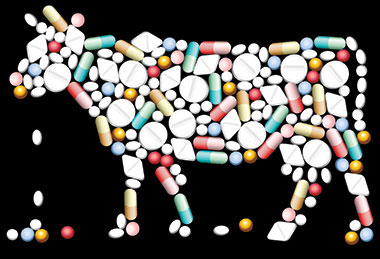 Commercially raised animals, especially chickens and cows, contain excessive levels of several different dangerous chemicals in an attempt to keep animals "healthy" and to artificially increase their size. These chemicals include antibiotics, arsenic, tranquilizers, steroids, growth hormones, medicines, vaccines, and parasiticides.
Commercially raised animals, especially chickens and cows, contain excessive levels of several different dangerous chemicals in an attempt to keep animals "healthy" and to artificially increase their size. These chemicals include antibiotics, arsenic, tranquilizers, steroids, growth hormones, medicines, vaccines, and parasiticides.
When we eat this meat, we are eating degraded meat as traces of these chemicals pass into our system. Experts are also citing antibiotic usage in factory farming as a contributing factor to the steadily rising rates of antibiotic resistance in the US.
These contaminants pass directly from the meat
into your body when you consume it.
When we eat factory-farmed meat (or feed it to our pets), here is the chemical concoction that often comes with it:
Antibiotics...
The CDC states that 2 million Americans become infected with antibiotic-resistant bacteria each year, and at least 23,000 die. It concluded that at least 22% of antibiotic-resistant illnesses are linked to food, and research shows that factory-farmed meats sold within the US contain drug-resistant bacteria.
13% of antibiotics given to animals are simply to make them grow faster. The overmedication of animals has resulted in antibiotic-resistant strains of malaria, tuberculosis, and staph.
Steroids & hormones...
- Hormone implants to promote faster growth.
- 6 anabolic steroids, used in various combinations.
Measurable levels of both the above growth-promoting hormones are found at slaughter in the muscle, fat, liver, kidneys, and other organ meats. The fat levels of commercially raised chickens are more than 3 times the level of free-range chickens because of the artificially induced bulk created by growth hormones.
Steroids In Beef Linked to Low Sperm Count & Sub-fertility
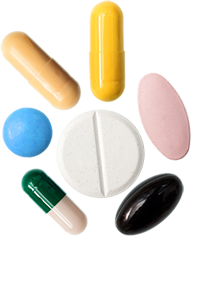 A study was carried out to assess the consequences of beef consumption by pregnant women on their adult male infants. The study team assessed sperm quantity and quality among 773 men. Data on beef consumption during pregnancy was available from the mothers of 387 men. These mothers consumed, on average, 4.3 beef meals per week, and were divided into a high beef consumption group (> 7 meals per week) and a low beef consumption group (< 7 per week). Sperm concentration and quality were compared in both beef consumption groups:
A study was carried out to assess the consequences of beef consumption by pregnant women on their adult male infants. The study team assessed sperm quantity and quality among 773 men. Data on beef consumption during pregnancy was available from the mothers of 387 men. These mothers consumed, on average, 4.3 beef meals per week, and were divided into a high beef consumption group (> 7 meals per week) and a low beef consumption group (< 7 per week). Sperm concentration and quality were compared in both beef consumption groups:
- Sperm concentration was 24.3% higher in the sons of mothers in the "low" beef group.
- Almost 18% of the sons born to women in the high beef group had sperm concentrations below the World Health Organization threshold for sub-fertility.
"These findings suggest that maternal beef consumption is associated with lower sperm concentration and possible sub-fertility, associations that may be related to the presence of anabolic steroids and other xenobiotics in beef."(3)
Medicated additives & vaccines...
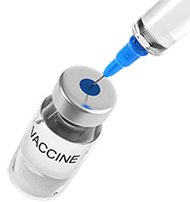 The livestock industry is becoming increasingly reliant on pharmaceutical companies to help them engineer the "perfect meat." Medicines, feed additives, vaccines, and parasiticides for pets and livestock are a $22 billion global market. These chemicals include dangerous meat additive such as ractopamine, used by pig farmers in pig feed to unnaturally accelerate weight gain, and a chemical banned in 160 countries.
The livestock industry is becoming increasingly reliant on pharmaceutical companies to help them engineer the "perfect meat." Medicines, feed additives, vaccines, and parasiticides for pets and livestock are a $22 billion global market. These chemicals include dangerous meat additive such as ractopamine, used by pig farmers in pig feed to unnaturally accelerate weight gain, and a chemical banned in 160 countries.Elanco Animal Health, a division of the pharmaceutical company Eli Lilly and Co., is a leading producer of medicated feed additives for the agricultural industry. Merck & Co and Sanofi focus on the production of vaccines and parasiticides.
Medicated additives systematically added to farmed animal food add to their chronic disease, just as they do in humans.
Pesticides...
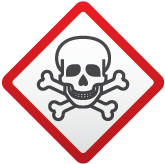 37% of pesticides produced are used in agriculture, and are added to the corn and soy and other animal feed products provided to factory-farmed animals, as well as sprayed on the pastures they graze on. A single bushel of corn eaten by cattle has been treated with over 1 gallon of oil-based fertilizers.
37% of pesticides produced are used in agriculture, and are added to the corn and soy and other animal feed products provided to factory-farmed animals, as well as sprayed on the pastures they graze on. A single bushel of corn eaten by cattle has been treated with over 1 gallon of oil-based fertilizers.Pesticides are as toxic to the farm animal food chain as are they are to both the human and pet food chains.
Pesticides in our food: The health hazards...
Diseased meat & ill health of animals...
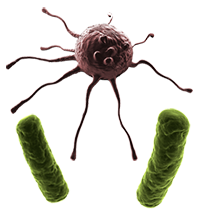 Malignant tumors are routinely found in animals that are sent for slaughter. As a very small percentage of animals that pass through the slaughterhouse are inspected, many diseased animals undoubtedly make it to the kitchen table.
Malignant tumors are routinely found in animals that are sent for slaughter. As a very small percentage of animals that pass through the slaughterhouse are inspected, many diseased animals undoubtedly make it to the kitchen table. Over their lifetime, an animal collects and holds in their tissues an array of poisons from pesticides, to herbicides, and artificial fertilizers.
Pollution & disease in the seafood industry...
Heavy metal pollution is now a serious concern as mercury and other contaminants are being found at alarming levels in fish such as tuna, swordfish, and other species. Check out the Eco Friendly/Earth Friendly Seafood Guide to make both safe and ecologically responsible seafood choices.
Processed & unnatural diet...
Lack of appropriate nutrition directly correlates to a reduction in the health of the animal, and meat that is far less nutritious.
Our Pet's Food At Risk
The public trusts that the government will do all it can to protect their pets from dangerous pet foods on the shelf. This is far from the case. Although largely unknown to the general public, not only has the FDA done little to address the long-standing issue of contaminated jerky products from China which have caused thousands of pets to become sick, but they also allow the following items to be legally used in pet foods:
- Recalled foods
- Expired foods
- Meat from diseased animals
- Foods contaminated with bird, rodent, or roach excrement
Here are their policies:
FDA Compliance Policies & Pet Food CPG Sec. 675.100 Diversion of Contaminated Food for Animal Use CPG Sec. 690.300 Canned Pet Food CPG Sec. 675.400 Rendered Animal Feed Ingredients |
Finally... No More Arsenic in Poultry
When it comes to chicken feed, arsenic is a common occurrence. Chicken feed contains roxarsone, which is an arsenic-based food additive. When chickens eat this feed, they pass the toxin on to their eggs. Roxarsone was approved by the FDA in 1944 as a way of preventing chickens from becoming ill. Some of the chicken waste is also used as fertilizer, and is not properly disposed of, leading to arsenic in soil, water, and crops.
Feeding arsenic, which is an extremely toxic poison, to a popular food item such as chicken is dangerous. Arsenic exposure is linked to serious health conditions including cancer (skin, bladder, kidney, liver, and lungs), as well as endocrine and neurological disorders.
- A 46 lb. 6 yr old child who eats 2 eggs per day would accumulate 506 mcg of arsenic per week (far more than the recommended minimum). According to The Salt Lake Tribune, roxarsone and other arsenic-based substances are frequently added to poultry and swine feeds. Two area children were found to have much higher than average levels of arsenic (75-100% higher than the limit). The meat producers believe the additives, in conjunction with antibiotics, help animals combat disease and grow meatier. While the meat industry tries to claim that most of the arsenic is excreted in the chicken waste, a Utah Health Department study has found evidence to the contrary.(4)
- A 2004 study showed that fast-food chicken contained increased levels of arsenic, and more than half of the store-bought chicken tested contained arsenic. The American Chemical Society notes that about 70% of broiler chickens sold in America are fed roxarsone. The agricultural industry uses about 2.2 million pounds of roxarsone each year.(5)
Arsenic poses a threat to public health and pollutes our environment. Although many public figures stand for banning arsenic in the poultry industry, disturbingly, Republican Sen. E. J. Pipkin called the ban attempt an "assault" on the profitable poultry industry. He stated that industry-funded studies support the FDA's contention that the feed additive is safe and claims that voicing concerns of arsenic in poultry sends an "anti-farming" message to the state's poultry industry.
In what has become a typical response from the FDA on dangerous chemicals in our foods, until recently it had chosen not to ban arsenic as a food additive. Finally, after food-safety groups threatened to sue, (and almost 4 years after the agency was presented with a petition asking that arsenic-based drugs be withdrawn), the FDA decided to act on the issue. The nation's first statewide ban on the use of additives in chicken feed containing the toxic additive was among a dozen new state laws that took effect Jan. 1, 2013 (in part due to arsenic also being found in rice). The FDA announced it will remove three arsenic-containing drug types used to treat livestock, most notably chickens. This latest move on arsenic in the food supply will result in what we hope to be an almost total elimination of arsenic from animal feed.
Buying organic chicken and chicken eggs eliminates this arsenic concern completely.
RELATED ARTICLES
- Meet your meat - today's meat is not what you think it is
- 7 dangers of eating factory-farmed meat
- Eating meat responsibly
- The sordid seafood industry
- Environmental impact of factory farming
- Cooked meat & cancer
- Serious health dangers of pesticides in food
- Pesticides in our home and garden
- What GMOs are & why you should avoid them
- How cooking affects food
- Pasteurized vs. raw dairy
- The health benefits of raw dairy
- The FDA: Failure to protect our food on a mass scale
- Food pyramids & food politics